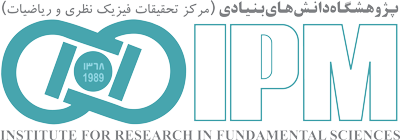“School of Astronomy”
Back to Papers HomeBack to Papers of School of Astronomy
| Paper IPM / Astronomy / 17979 |
|
||||||||||||||||||
| Abstract: | |||||||||||||||||||
|
Resolved studies of the correlation between the radio and far-infrared (FIR) emission from galaxies at different frequencies can unveil the interplay between star formation and relativistic interstellar medium (ISM). Thanks to the LOFAR LoTSS observations combined with the VLA, Herschel, and WISE data, we study the role of the cosmic rays and magnetic fields in the radio-FIR correlation on scales of ~> 200 pc in the nearby galaxy IC342. The thermal emission traced by the 22 micron emission, constitutes about 6%, 13%, and 30% of the observed radio emission at 0.14, 1.4, 4.8 GHz, respectively, in star forming regions and less in other parts. The nonthermal spectral index becomes flatter at frequencies lower than 1.4 GHz (a=-0.51 +- 0.09, S(nu)~ nu^(a)) than between 1.4 and 4.8 GHz (a = -1.06+- 0.19) on average and this flattening occurs not only in star-forming regions but also in diffuse ISM. The radio-FIR correlation holds at all radio frequencies; however, it is tighter at higher radio frequencies. A multi-scale analysis shows that this correlation cannot be maintained on small scales due to diffusion of cosmic ray electrons (CREs). The correlation breaks on a larger scale (320 pc) at 0.14 GHz than at 1.4 GHz (200 pc) indicating that those CREs traced at lower frequencies have diffused a longer path in the ISM. We find that the energy index of CREs becomes flatter in star forming regions in agreement with previous studies. Cooling of CREs due to the magnetic field is evident globally only after compensating for the effect of star formation activity which both accelerate CREs and amplify magnetic fields. Compared with other nearby galaxies, it is shown that the smallest scale of the radio-FIR correlation is proportional to the CREs propagation length on which the ordered magnetic field has an important effect.
Download TeX format |
|||||||||||||||||||
| back to top | |||||||||||||||||||



















